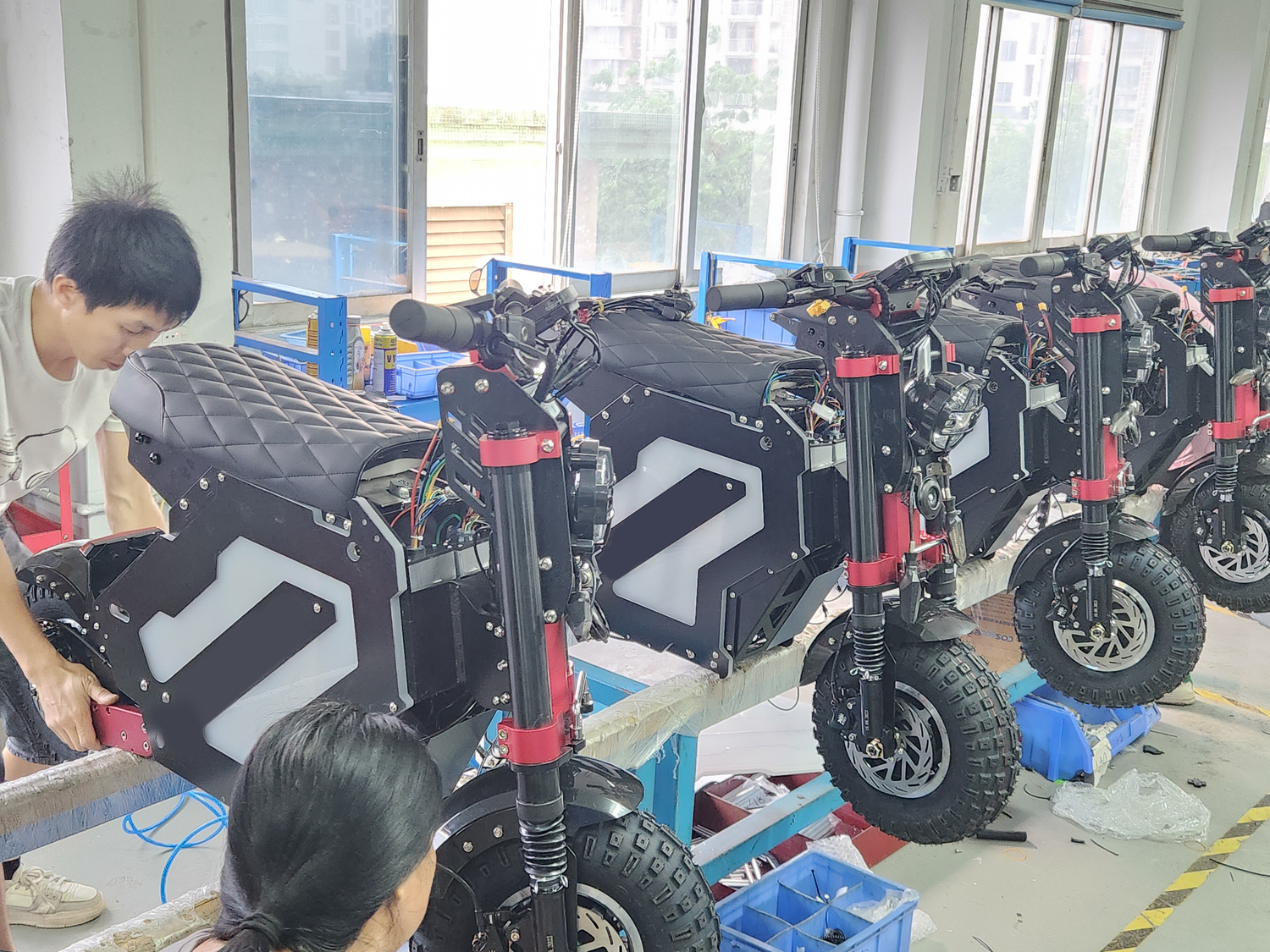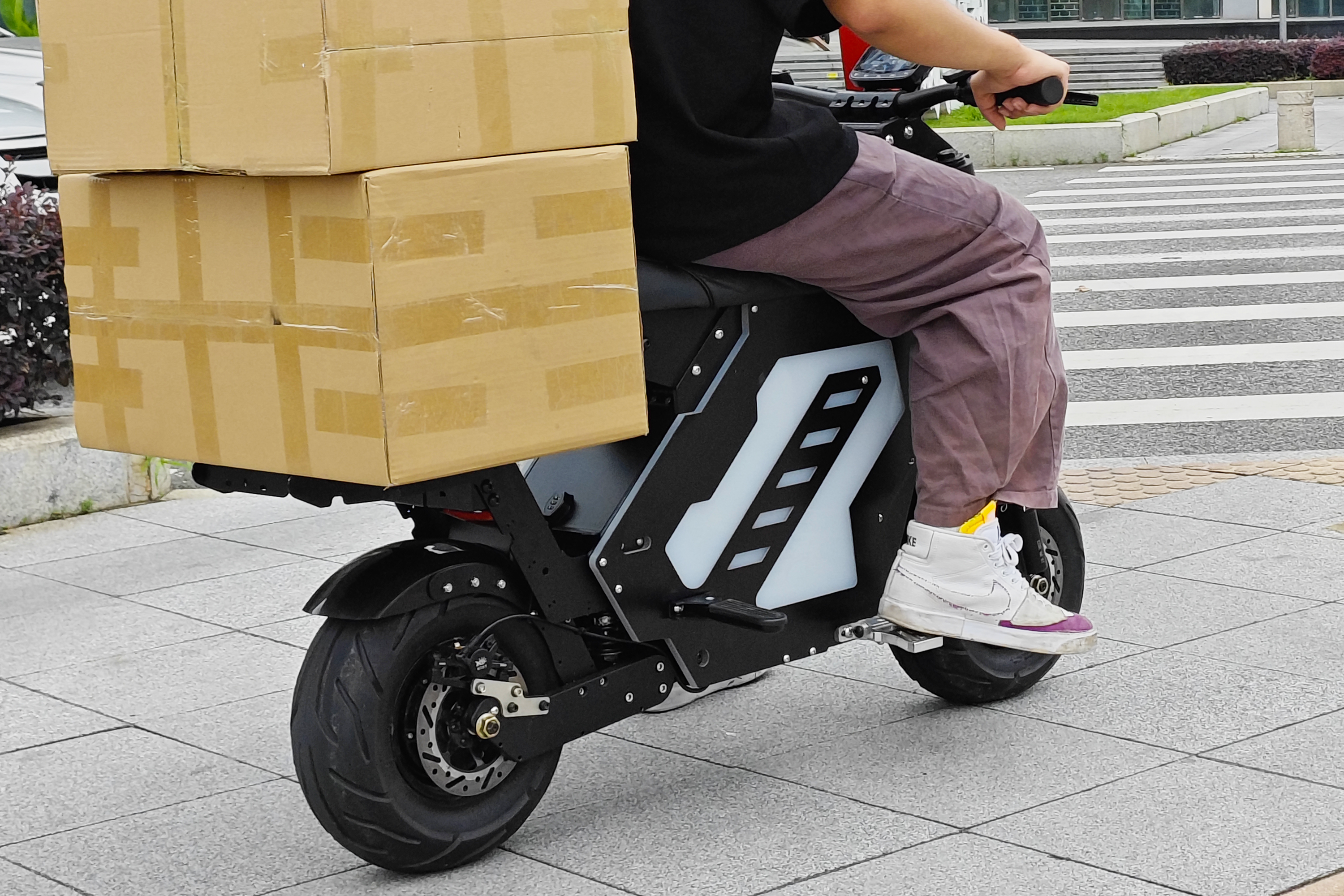Electric motorcycles, as an eco-friendly and efficient means of transportation, are rapidly gaining popularity in global markets. To meet the demands of consumers worldwide, many manufacturers are setting up overseas warehouses and ensuring that each electric motorcycle undergoes meticulous assembly and inspection before shipment. This article will guide you through the entire process, from the careful assembly in the factory to stocking overseas warehouses.

Careful Assembly: The Expertise and Dedication of Factory Workers
In the production of electric motorcycles, the professional skills and meticulous operations of factory workers are crucial. Each electric motorcycle is carefully assembled by experienced technicians, with every step, from frame welding and battery installation to motor calibration, strictly controlled.

1. Precise Component Manufacturing
The first step in producing an electric motorcycle is ensuring the quality of every component. The factory uses advanced machining equipment and techniques to ensure that every part meets strict quality standards. High-quality components are the foundation of the reliability and durability of electric motorcycles.
2. Rigorous Assembly Process
Assembling electric motorcycles requires high technical skills and rich experience. Factory workers receive professional training and are proficient in every assembly step. They strictly follow standard operating procedures to ensure that each electric motorcycle operates stably and safely.
3. Comprehensive Quality Inspection
After assembly, each electric motorcycle undergoes comprehensive quality inspections, including battery performance tests, motor operation tests, and brake system tests. Only motorcycles that pass all inspections can proceed to the next stage, ensuring that every vehicle reaching consumers is flawless.

Stocking Overseas Warehouses: Quickly Responding to Global Market Demand
To better serve global consumers, many electric motorcycle manufacturers set up overseas warehouses. This not only shortens delivery times but also improves customer satisfaction.
1. Optimized Inventory Management
Inventory management at overseas warehouses is crucial. Manufacturers use advanced inventory management systems to monitor stock levels in real-time, ensuring sufficient stock of various models and colors of electric motorcycles. Additionally, inventory strategies are dynamically adjusted based on market demand to avoid stock shortages or excesses.
2. Efficient Logistics and Distribution
Transporting electric motorcycles from the factory to overseas warehouses requires an efficient logistics system. Manufacturers choose reliable logistics partners to ensure that each motorcycle is delivered safely and quickly to overseas warehouses. By reasonably planning transportation routes and times, logistics costs are minimized.
3. Attentive After-Sales Service
Setting up overseas warehouses not only speeds up delivery but also provides more attentive after-sales service. If consumers encounter problems after purchasing electric motorcycles, they can quickly receive professional maintenance and repair services, enhancing user experience and satisfaction.
Conclusion
The entire process from the careful assembly of electric motorcycles in the factory to stocking overseas warehouses reflects the manufacturers' high regard for product quality and customer experience. By optimizing production processes, strictly controlling quality, and managing efficient logistics, manufacturers can not only meet global market demands but also provide faster and more convenient services to consumers. In the future, as the electric motorcycle market continues to expand, the role of overseas warehouses will become even more important, aiding in the promotion and application of electric motorcycles worldwide.


Leave a comment
All comments are moderated before being published.
This site is protected by hCaptcha and the hCaptcha Privacy Policy and Terms of Service apply.